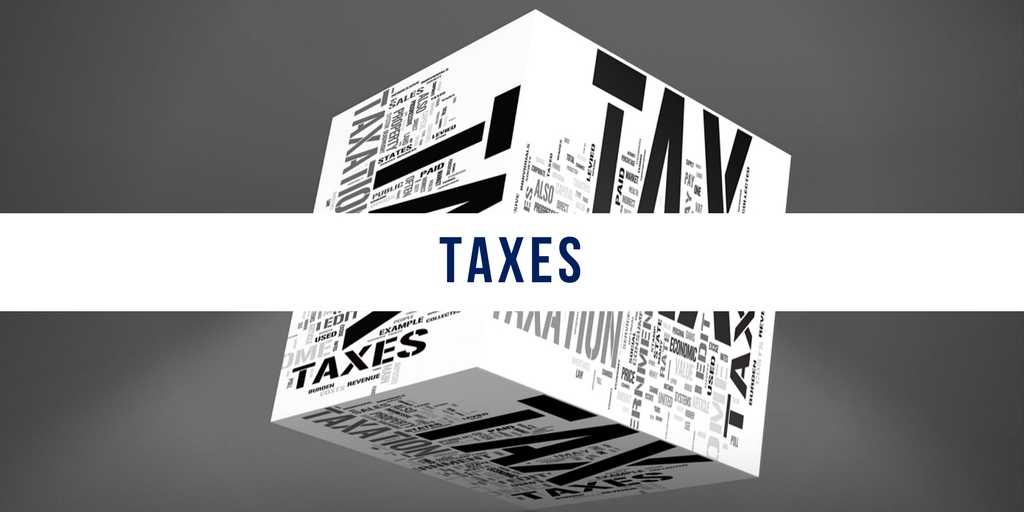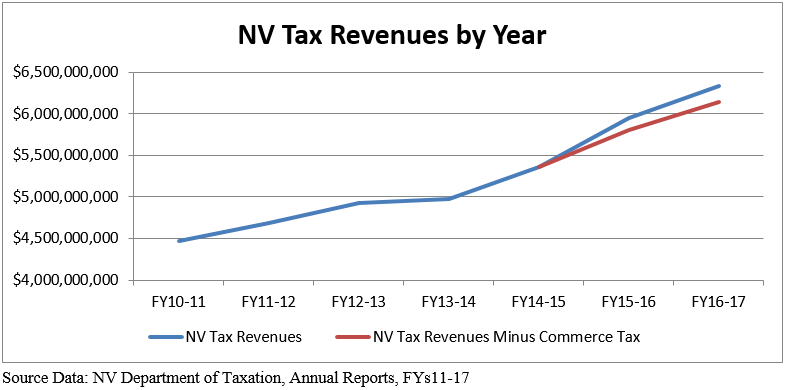
Sandoval’s pro-tax fearmongering unsupported by data
Gov. Brian Sandoval appears to be overly concerned that his signature legislative achievement, the Commerce Tax, might not stand the test of time — at least that’s the impression given by his misleading statements to media outlets on the subject.
Since learning in late 2017 that Nevada’s Attorney General (and 2018 Republican gubernatorial candidate) Adam Laxalt supports the concept of repealing the Commerce Tax, Gov. Sandoval is on-record as having proclaimed the following with regards to the financial impact of repeal:
“[Repealing the Commerce Tax] is going to hurt kids, going to hurt teachers, it’s going to hurt parents. Every single [new] program would be eliminated.”
That’s pretty apocalyptic talk. He continued:
“Anyone supporting a repeal of the Commerce Tax must explain to Nevada’s children, families and businesses which education initiatives will be cut if it is eliminated…Will they cut gifted and talented programs, end all-day kindergarten, eliminate special education resources, decrease literacy programs that help students read by third grade, cut autism funding, stop career and technical education, and get rid of technology in schools grants? Any discussion of eliminating this revenue source must include answers about where in the budget they will cut.”
Sandoval’s attempts to paint repeal as a grave injustice to the state’s ailing education establishment, however, have no basis in fiscal reality.
Contrary to what the outgoing governor suggests, education spending is set to increase every year into the foreseeable future, even before Commerce Tax revenues are taken into account.
What this means, is there will be no need for cuts in education — or anywhere else — in the event that Nevadans choose to repeal the governor’s ill-conceived gross-receipts tax at the ballot box or through their elected representatives.
Indeed, even without the Commerce Tax, politicians will be more than able to do what they normally do when it comes to Nevada education: Continuously throw more and more money against the wall, year after year, hoping for something to stick.
A review of fiscal 2017 data from the Nevada Department of Taxation confirms this.
The data reveal that statewide revenues increased by nearly $400 million last year, producing total revenues of about $6.3 billion. Of that $6.3 billion, less than $200 million was attributable to the Commerce Tax.
In other words, even if the Commerce Tax had failed to collect a single dime, the state would still have seen nearly $200 million in additional revenue from the year prior — an annual increase of about 3.3 percent.

What’s more, the Commerce Tax provides businesses with a 50 percent tax credit to be applied against their Modified Business Tax (MBT) liability — meaning that, if the Commerce Tax is ever repealed, the actual net-revenue loss to the state would be far less than what the Commerce Tax brings in annually.
So, instead of being forced to make cuts to education, as the governor indicates, the state’s coffers will most likely continue to experience net-revenue growth on a sustained basis for years into the future.
Upon what numbers Sandoval based his dire warnings is anybody’s guess, but they weren’t the ones from his own administration’s Department of Taxation.
Of course, like many politicians, the governor likely has a different definition of “spending cuts” than average Nevadans. Rather than actual reductions in spending, he is merely referring to a reduction in the expected growth of spending.
Note the subtle yet meaningful difference.
Imagine if your colleague received an annual bonus at work, then described his windfall as a “cut” simply because it wasn’t as big as he had hoped for or expected.
Sadly, it is all too common for big-government advocates to mislabel such budgetary phenomena in this manner. That’s precisely why the size of government always functions as a one-way ratchet: Even spending increases are labeled by politicians as cuts, simply because those increases are not as aggressive as they would like.
But when one steps back from the misleading rhetoric and simply reviews the data, the lesson is clear: Nevada’s statewide revenues will continue to increase on an annual basis, and so too will the state’s capacity to increase its investment in public education — irrespective of what may happen to the Commerce Tax in the coming years.
Gov. Sandoval is free to support higher taxes and bigger government if he so desires. But he has an obligation to be fully transparent with Nevadans, not mislead with political spin.
Daniel Honchariw is a policy analyst at NPRI.